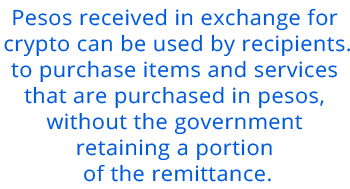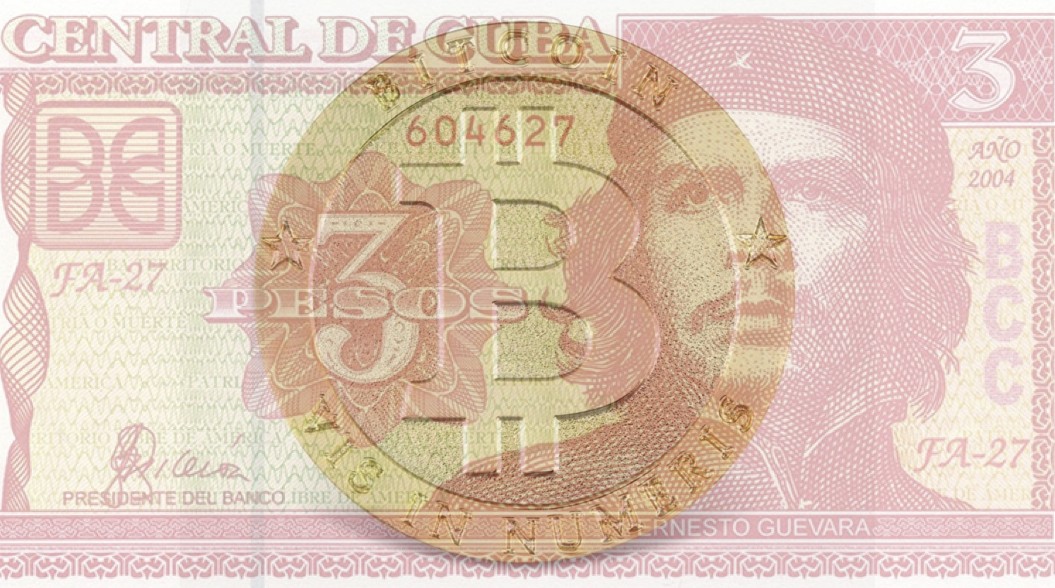The Emergence of Cryptocurrencies in Cuba
Rory Curtin
Milano School of Policy, Management, and Environment
The New School, New York
The number of cryptocurrency users throughout Cuba has grown significantly since the technology first arrived there in 2018, demonstrating a desire in Cuban citizens to invest and expand purchasing opportunities.
Introduction
“Crypto is here to stay” a young Cuban doctoral student told me, echoing the opinions of thousands of people already trading in Cuba – a nation with limited access to both the internet and expendable income. This increasing interest in the crypto market is not surprising given:
- the cumulative effects of the nation’s limited credit system;
- the depreciation of the Cuban peso (CUP) as a result of the Tarea Ordenamiento (ongoing monetary re-ordering);
- a Trump legacy of greater restrictions placed on sending remittances by relatives in the U.S.;
- wide areas of economic activity prohibited to those in the private sector;
- the lack of financial assistance from the government in the form of loans or subsidies for private business activity; and
- a June 2021 Cuban government ban on depositing US dollars (USD) into Cuban banks.
Cryptocurrencies (crypto) are digital currencies in which transactions are verified and records maintained by a decentralized system using cryptography, rather than by a centralized authority. They are used in place of fiat money (government issued currencies) and kept in stable coins such as USDT (a cryptocurrency designed to always equal one USD); and they are also transferred to platforms that in turn allow people to pay for a wide range of things, from essential services such as recharging cell phone accounts, to accessing Netflix, or Spotify Premium. With no national bank acting as an intermediary, all of these transactions are peer to peer, allowing for a significant and previously unprecedented level of autonomy.
For Cubans, the restrictions placed on the export of capital to import goods, particularly in the private sector, are great, and crypto has the potential to ameliorate those as well, at least with respect to goods that may fall within the definition of “personal goods”. In order to formally import essential goods, from washing machines for a laundry mat, to industrial ovens for a restaurant, the only channel is through inefficient state owned companies. Not only are there long wait times - eight months for a three D printer - according to a cuentapropista (business owner) from Havana; but the costs involved in this can be immense, to the extent that it can affect the viability of a startup private enterprise. Despite the challenges of getting a visa from a foreign country to travel abroad, using a cryptocurrency to bring some limited supplies that may qualify for personal use back into the country can be a better option. Crypto can also be traded for hard currency and used to fund the MLC debit card, nominated in US dollars and used to purchase products available only in hard currency, exclusively through the debit card system in Cuba as described below. MLC can be filled with any of the twelve hard currencies traded by the Cuban Central Bank.

Recipients of crypto in Cuba can trade it for Cuban pesos at attractive informal market rates. Pesos received in exchange for crypto sent from abroad can be used by recipients and their families to purchase those items and services that are purchased in pesos, without the government retaining a portion of the remittance. Thus, crypto can seem an attractive alternative to avoid the payment charged by the Cuban government on remittances and also to overcome the restrictions on capital outflows and the absence of a credit system with which to purchase abroad. Furthermore, it enables purchases abroad without taking hard currency out of the country while not competing for the limited supplies of hard currency in the country used by the state owned businesses in Cuba, which continue to produce many essential goods utilized by the majority of Cuban citizens. For these reasons, the emergence of crypto in Cuba opens a unique period of economic activity for citizens of the island nation.
Source Channels and Uses
There are currently several channels by which crypto is arriving in Cuban bank accounts. Primarily a friend or relative (and more recently, online acquaintances that are part of the same community of networked crypto traders) living abroad can load money from their foreign debit or credit card into their own crypto wallet and send it to a Cuban’s e-wallet. The Cuban recipient then converts their cryptocurrency into MLC and uses it for a direct purchase, or invests it. There are various services available for sending crypto to Cuba including:
- DUC, an application that generates a QR code for the sender to share with the recipient, at which point crypto can be loaded into a MLC account; and
- Cuba Pay, an application developed for Cubans to load their money into their MLC accounts, using crypto channels, or even PayPal and Venmo.
If a Cuban does not know someone overseas with a foreign card credit or debit card to purchase and send crypto back to him/her, there are other options. Free applications including WhatsApp, Telegram, and Signal are being used to purchase crypto in exchange for Cuban pesos, or to purchase other items with crypto, all on a peer to peer basis. The Cuban purchasers deliver the pesos as instructed by the crypto seller either abroad or in Cuba, then use the purchased crypto in the same manner as other crypto holders.
Additionally, those with crypto may trade it on exchanges, or purportedly invest it, including on the platforms HeavenEx, QBita, and Trust Investing (TI). The first TI gathering was held in October of 2018, having attracted participants by word of mouth, as a “novel economic alternative” (Juventud Tecnica, 2021). By May, 2021 TI had 234,000 Cuban users (according to its Telegram channel), illustrating a remarkably high demand by Cubans to invest their savings.
TI, for example, boasts of daily returns in a range of 0.1% to 5% (Lee, 2020). In the past, some have received 20% returns monthly, thus getting their initial investment back in five months. However, these rates vary as a result of market volatility as well as a 5% extraction (or servicing) fee that is taken by the company from one’s profit, when being sent to an external wallet. Depositing crypto with them, these companies claim, will protect crypto holders from the fluctuations of the crypto market[1].
There are some red flags raised by this arrangement. First, no other legitimate entity in the international capital markets promises such a high rate of return. Second, these companies do not appear to have an independent guarantor or backer to support their obligations to the depositors and may well be nothing more than a Ponzi scheme. In a Ponzi scheme, the obligations of the first depositors/investors are repaid from the deposits/investments of the most recent clients - that is until new clients do not deposit sufficient funds to satisfy the obligations that have come due of the prior clients - at which point the scheme falls apart.
Apart from the legitimacy of these schemes, what is more important here is why Cubans are investing in them in the first place. They demonstrate that Cubans are looking for both ways of receiving capital from abroad and also investing their savings. It was a matter of scarcity and necessity that has brought crypto technology to Cuba as a much-needed means of either getting money from family overseas, or as a possible investment option available to Cubans who otherwise have limited, if any, opportunities for investing their savings.

Regardless whether TI or other high yield investment funds in Cuba may be scams or provide a lasting method for investment, the digital currency option has opened a new digital world. Ideally, a government regulated securities market should develop in Cuba, through which the citizens of the country can invest their savings in Cuban private enterprises. In the meantime, when users are properly educated about the risks, rewards, and various channels through which they can safely transfer, save, and monetize their cryptocurrency, then this technology could very well fill, for a time, a demonstrated desire by some of the population to save and invest.
Growth of Crypto use in Cuba
Cubans started learning about crypto when the Internet began to become accessible there in 2013, and even more so with the availability of 4G in 2018. Simultaneously, there has been an increase in the amount of capital entering Cuba, both in the form of remittances and as private capital for investment. The availability of this new capital has incentivized Cubans to address locally the scarcity of essential goods using this new capital to produce essential goods in the private sector. Concurrently, the new savings generated through private activity has led Cubans to look for new investment opportunities. As the Cuban debit system does not allow for transactions overseas, crypto is ideal for anonymous exchange and opens up a means by which to bring necessary goods and materials into the country (not exceeding the permitted government limits). Additionally, readily accessible gateways to purchase crypto have also opened in the last couple of years through the establishment of so called high yield investment funds. Despite the average yearly salary being 14,328 CUP, (the equivalent of 573 USD), cryptocurrency is an attractive alternative for many Cubans. Some funds require a minimum deposit of 15 USD (or the equivalent in BTC) to open an active account with them, so the barrier to entry is low.
This recent inflow of crypto from abroad should be viewed as a good thing by the Cuban government. It is essentially money coming into a country with a shortage of hard currency, foreign investment, and international trade opportunities. However, the Cuban government is highly controlling and has created an imperfect and limited market structure. At the moment, the government has advised against the use of crypto but not forbidden it (Sanchez, 2021). The most likely reason for the government to advise against the use of crypto, other than the risk of loss for uneducated users, is due to its lack of regulatory control, which the government does not and perhaps cannot exercise. A governmental concern, in addition to its citizens being defrauded, is the use of crypto in the flight of capital abroad. However, as discussed above, the vast majority of the crypto being bought and sold is with money that is did not originate in Cuba and therefore is not being brought out of the country.
The legality of trading crypto in Cuba remains a grey area. Crypto is not necessarily a prohibited commodity or good, which would be illegal to exchange. In May of 2021, the Central Bank of Cuba created a warning list of possible crypto Ponzi schemes, including the following: Mind Capital, Mirror Trading, Arbistar, TI, Qubittech, and X-Toro. These warnings are directed generally at those who are unfamiliar with the technology and risks associated with any monetary transaction online, not only those involving crypto.

According to Cuban law, something such as crypto trading that is not on the list of activities reserved for the State and not permitted for the private sector (a list that is subject to change). Although not explicitly deemed a crime to deal in crypto, it could in the future be deemed to fall within the definition of the prohibition for “illicit enrichment". In response, organizations are taking measures to protect themselves, using the term “I exchange crypto” instead of “I sell crypto” when posting online, as they believe this will reduce their risk of prosecution for selling a product that may be deemed a prohibited activity. Also, these companies maintain that there are no ‘investments’ being made in the company. Rather, people are trusting their money to a company that offers ‘crypto asset management plans’. It seems that these distinctions could be deemed insufficient by a court in a crypto prosecution.
Survey findings
To determine the specific role of crypto for everyday citizens, I administered a confidence (limited to a set a people known by a single individual) sample survey to 19 TI participants in Cuba, to identify source channels, uses, and the socio-economic and racial backgrounds of those trading and investing. Findings from this survey were cross analyzed with other research, as well as confirmed with a number of experts, via both formal interviews and unofficial consultations I conducted. First, the demographic findings of the survey were that TI participants are mostly male and white. Forty-seven percent of the 19 participants said they work for the state, and another 47% said that they work for the private sector. Whether these persons have additional work in the private sector is unknown.
Cara o cruz, hablamos de trust investing, an article by Juventud Tecnica from June 2021 found in their separate survey sample that the majority of TI participants are white and male as well, and that the majority of the individuals they surveyed work for the state sector (JuventudTecnica, 2021). According to a member of the national leadership group of a crypto trading platform who reviewed my survey results, my finding that half of those surveyed work for the state sector and half for the private sector are valid. Additionally, he confirmed my finding that approximately 80% of participants in his platform are university graduates or mid-level technicians.
By far the most interesting finding from my survey was that despite the fact that 55-75% of most Cubans’ income is used to buy food, a large percentage of those who replied said that they are investing in one of the crypto platforms, not merely holding their money there or using it to trade currencies (Reuters, 2016). In other words, because of the lack of a national securities market to provide investment opportunities for Cubans saving and investing in Cuban companies, crypto is bringing the Cuban population into the realm of international transactions and investment in a way not experienced before. The data illustrates that some of the private sector is generating enough of an income to guarantee their basic needs and generate savings for investment as well, and crypto ventures are the choice of the day for them.
Furthermore, my TI survey showed that most TI participants are primarily using their prior savings to invest crypto. It is an interesting and key finding that no one answered my survey indicating that they were investing in crypto with remittances. Therefore, after paying for food and other essential goods, those who answered the survey, had enough left over to dedicate to crypto, without directly using remittances. Despite remittances playing an essential role in the Cuban economy, this research shows that at least a small group of both private and state employees are generating enough income to invest their own money as well, attempting to generate a financial return.
In addition to administering an anonymous survey, I conducted a one-on-one virtual interview with a Cuban doctoral student currently doing his research in the United States. He explained to me that he primarily uses crypto for sending money back to Cuba, to family, friends, and fellow members of private WhatsApp crypto groups. This shows that the technology has opened up the possibility of remittances even for Cubans without family abroad. Indeed, this is a notable social issue for the country, as the majority of those with family abroad are white (interview, June 2021), thus their sending remittances back home perpetuates socio-economic gaps within the nation. Crypto, formal crypto exchanges, and the use of communication channels like WhatsApp, Telegram, Signal, and even Facebook messenger, are allowing a diversity of people to purchase and trade currencies with one another.

According to the survey, the most commonly used app for crypto trading is WhatsApp, with 90% of the activity. As mentioned, the negative consequence of people trading crypto peer to peer on such free applications is the risk involved. There is no fool-proof system, but procedures can and are adopted to reduce risk of loss by fraud. Currently, many participants ask the online group they are trading within for two references before trading with a stranger, to ensure his or her legitimacy. The Cuban graduate student I interviewed said that he knows people who have lost up to US $2,000 (a very large amount of money for most Cubans), but that this has not stopped his participation, only made him more careful. He, like many others, has developed elite groups where everyone is known and trusted by everyone else in their crypto community.
Conclusion
Cubans holding crypto can use it to purchase goods produced or sourced locally or abroad as well as to invest. In my interview with a Cuban economic specialist, he shared that, “In Cuba, where there are several restrictions on access to international financial markets due to the U.S. embargo, technological development has opened the opportunity for many people to invest abroad and crypto has been a relatively easy vehicle to operate and access, since they are located in frequently deregulated circuits, far from possible sanctions. To this must be added a low-wage environment and the opportunity that this opens up, especially for professionals who have the ability to understand the markets. I know many colleagues and students who have found a source of income that the economy does not provide, especially in times of crisis” [2]. In other words, the emergence of crypto offers new opportunities for Cubans to invest abroad and to sell their services abroad at a competitively lower rate and be paid in cryptocurrency. For those holding crypto in e-wallets, there is no limitation on the amount of money they are able to take abroad to travel with, as the money spent abroad by Cubans was never physically in Cuba in the first place.
In sum, the policy implications and impacts of crypto in Cuba are both numerous and diverse. Given the history of Cuba, the ongoing U.S. embargo, and the effects of the COVID-19 pandemic, the emergent utility and role of crypto in Cuba is highly relevant today. There is even more potential for crypto to make an impact on Cuban socio-economics than most would assume, and the political function of this technology remains to be fully explored and understood.
Note
A special thanks to David Pajón for his guidance, as well as Gabriel Vignoli, Renier Estevez, Marian Cabrera, Carlos Lage, and anonymous TI enthusiasts, for their opinions and contributions to this research.
References
Banco Central de Cuba (2021) Nota Informativa.
Elizalde, Rosa (2021) What They Don’t Say About Cuba. People’s Dispatch. July 15, 2021.
Guerra, Angel (2021) Otra vil mentira de Estados Unidos. La Journada June 18, 2021.
Juventud Tecnica (20210 Cara o cruz: hablemos de Trust Investing. Medium. June 2021.
Lee, Roy (2020) Is Trust Investing a Scam? Outranklab. December, 2020.
León, Jessica and David Pajón. New Actors and New Policies in Cuba: The Role of Credit Policy in the Reform. Chapter 6.
Oncubanews (2019) The private sector generates 32% of employment in Cuba. April 25, 2019.
Pajón, David (2021) The Expansion of the Private Sector in Cuba. Columbia Law School.
Wilkinson, Tracy (2021) Biden begins new thaw with Cuba. The Los Angeles Times. July 1, 2021.
(2020) The digital surge; The future of finance. The Economist, 10 October, p. 65 (US).
[1] A series of recent TI maintenance closures and server shifts by TI have raised concerns about both the reliability and trustworthiness of the company. The technical issues TI customers have faced are delays installing KYC (online identity validation), and in receiving their returns on time. Some believe that TI may be having cash flow problems as a result of the massive fluctuations that BTC and the entire cryptocurrency market is experiencing, as the value of BTC drastically plummeted mid-May and has yet to recover to its previous values.
[2] This conversation occurred between myself and a Cuban professor of economics and Cuban economic specialist in July of 2021.

Rory Curtin is currently a PhD student at the Milano School of Public Engagement at the New School in New York. She received her Masters in East Asian Languages and Cultures from Columbia University, where she researched the social implications of mechanized agriculture in Ladakh, India, (’20) and her Masters of Global Public Health from New York University, where she focused on the issue food of sovereignty for African immigrants in Florence, Italy (’18). She has dedicated her academic career to studying systems of resilience, which has brought her to her doctoral research on current economic and social development in Cuba. She is also a research fellow for the Urban Systems Lab, working on improving the sustainability of the urban food system in New York City.

